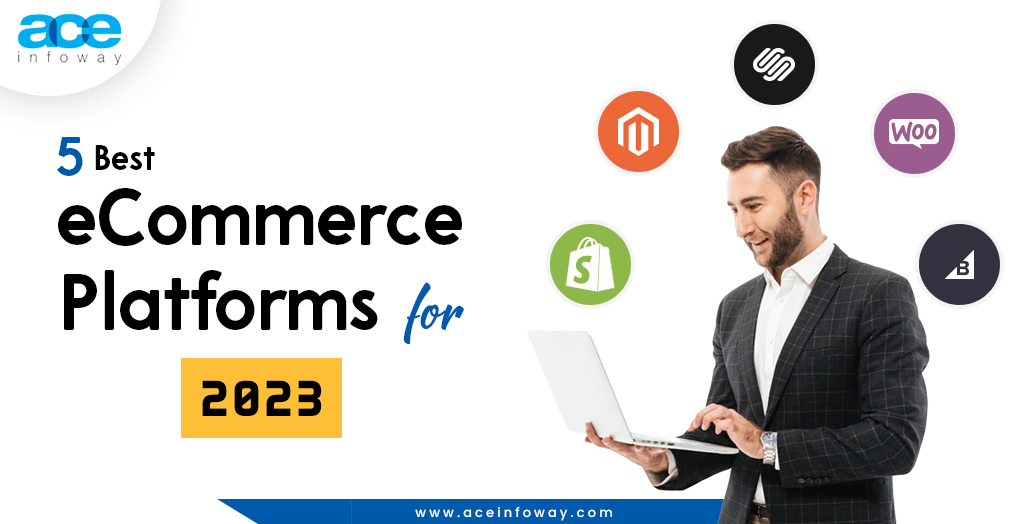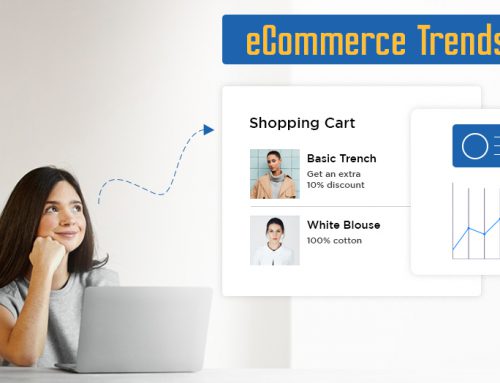Table of Contents
The value of global retail eCommerce sales amounted to around 4.9 trillion dollars in 2021 and is expected to increase by 50%, reaching $7.4 trillion by 2025. These statistics substantiate when it comes to the worldwide eCommerce boom.
And the growth of eCommerce for better UX is conveyed by the usage of the right technology trends, as technology is indeed the backbone of eCommerce. The latest eCommerce trends, such as artificial intelligence and voice search commands, provide customers with a more personalized experience trends are making purchases easier for customers.
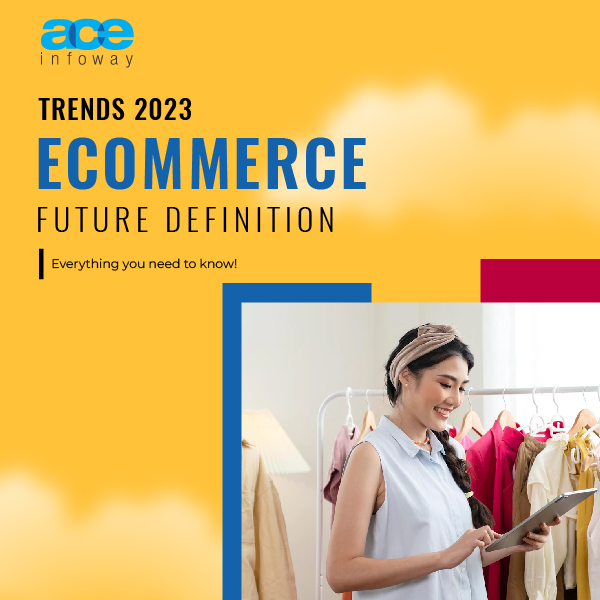
eCommerce Trends 2023 [eBook]
Get your free copy
Top 7 eCommerce Trends for 2023
1) Social Media a.k.a. Social Commerce
2) Augmented Reality
3) Voice Search
4) Automated B2B Transactions
5) Flexible payments
6) User-generated content
7) Personalization
So, let’s understand such trends that will define eCommerce in 2023:
1) Social Media a.k.a. Social Commerce
Social Media is now a great marketing tool, reaching a larger crowd!
The cutting-edge introduction of the buy button on Facebook and Instagram Checkout has revolutionized the effect of social sites in the eCommerce sphere.

Social media platforms were intended to provide virtual social life to their users, although nowadays their use for commercial promotions has skyrocketed.
It is expected to play a significant role in eCommerce in the coming years as most of these sites allow buyers to buy directly from social media accounts.
Hence, the use of Social Media Platforms for selling and buying products or services that directly connect businesses to consumers is designated as Social Commerce.
Moreover, businesses can gain incredibly significant consumer information about user behavior and interests by using social media sites as sales channels.

2) Augmented Reality
The face of eCommerce is evolving as a result of upgraded and more engaging online purchasing experiences.
Augmented Reality (AR) empowers consumers to visualize products and explore the commodities that may not be physically available for them to view.
The integration of AR technology into buying experiences is rapidly gaining traction: 61% of consumers prefer AR-powered stores, and 40% would pay more for a product they can experience through AR.

The senior director of product management at Google made a statement, “ Shoppers engage with 3D images almost 50% more than static ones. For merchants, we think that this could be a real game-changer for some of the smaller players.”
Augmented along with virtual reality allows internet buyers, to visualize purchases and interact with things before making a purchase. Cross-platform web development makes it possible to use mobile devices, tablets, and PCs to make this more convenient for users.

3) Voice Search
Alexa, Siri, and Ok Google are now the new member of households. All count on voice search technology that manifests the benefits of frictionless online processes. Voice search has also changed the way people purchase products and services.
Significantly advancing in recent years, this technology overrides traditional methods of searching, such as typing a query into a search bar.
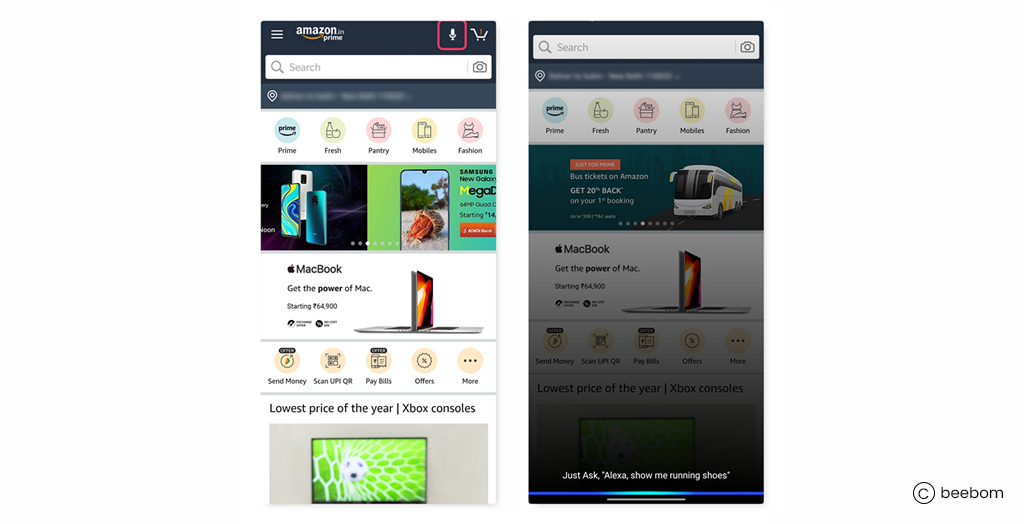
The growth of voice search technology intensified with its introduction by large enterprises like Amazon. It unveils many benefits in the eCommerce segment that includes, easy reviewal of products, time efficiency, and a smart shopping experience.
This technology trend rightly demands your website to be optimized for information that customers are looking for, such as location, hours, and products and services available. Technological advancement expands the possibilities for optimizing voice search terms and long-tail search queries.

4) Automated B2B Transactions
Technology has come a long way since wire transfers, and now B2B business owners have different payment methods to choose from. Technology helps businesses to overcome the risk involved in manual B2B transactions. Automation in B2B transactions streamlines the process for simpler payment-related execution.
Business-to-business sales are often recurrent sales with a vast scope. These transactions frequently necessitate more negotiation, while creating contractual agreements in some cases. As these processes can make it sluggish to close a purchase, automation becomes vital.
Automation can overcome the challenges involved in B2B traditional methods like costly paper checks, time-consuming manual processes, and the ability to capitalize on early payment discounts.
The other advantages automation brings along are minimal invoice cost, speed & accuracy in payment processing, higher tracking and reporting capabilities, fully optimized cash flow along with better security.
This B2B transaction automation trend will save the buyer time, money, and resources while also satisfying both the buyer and the seller.

5) Flexible Payments
Talk about it or not, the payment proceeding is indeed a crucial part of the conversion process and a fated segment for any customer. Justify the fact that shopping cart abonnement becomes one of the cited reasons for the complex checkout process.
So far flexible payment methods offer quicker payment cycles for both accounts– payable and receivable. Investing in such software can benefit your business with product data, order automation, customer onboarding, customer segmentation, pricing automation, order negotiation, and approval management.
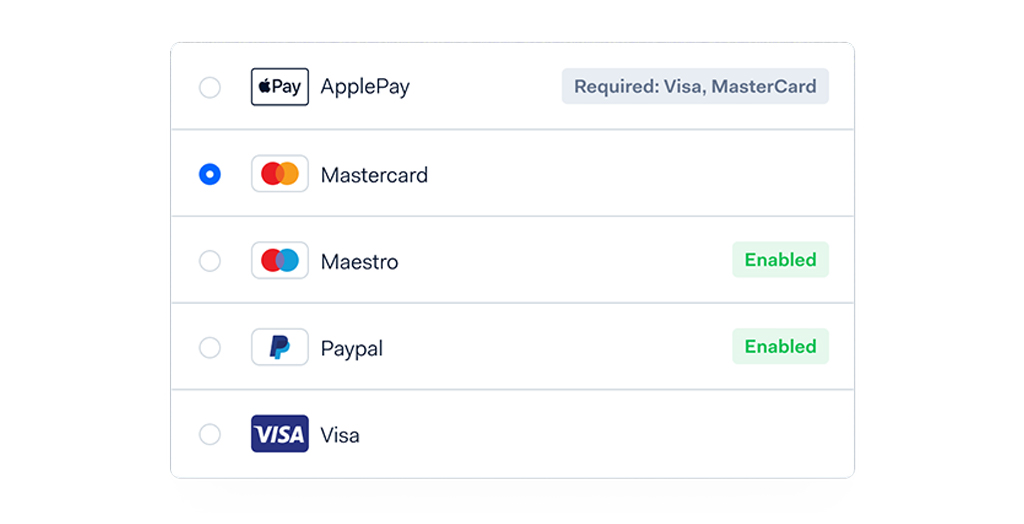
Flexible payment strategy reduces payment service provider costs, maximizes transactional approvals, and gives sellers the ability to gain analytical insights.
It is recommended for businesses on a global scale to have integrated different payment methods into a single platform. The most common payment methods to integrate into your eCommerce site:
-
- Digital wallets (PayPal, Google Pay, Amazon Pay, Mobilepay)
- Cards (Visa, Mastercard, Dankort, Maestro)
- Vouchers (PaySafeCard)
- Online banking
- Buy now pay later (Klarna, Walley, AfterPay & ClearPay)

6) User-generated Content
eCommerce sites can convert users to potential customers when the site content makes the product or service easily understandable. For this, user-generated content proves to be highly reliable for eCommerce businesses.
User-generated content can discard any concerns during the buying process and improves brand confidence.
To have the right user-generated content for your eCommerce site is to have honest and authentic reviews for your products or services by your customers. These customers are indirectly the ambassador of your product and eCommerce Development Services.

User-generated content comes in many forms and can come from a variety of masses. It can be in the form of images, videos, reviews, testimonials, and even a podcast! Your customers, fans, employees, and now specialized user-generated content creators can take your sales skyscraping.

7) Personalization
Personalization in eCommerce simply elucidates engaging customers on the buying section they prefer and supporting their entire journey with personalized offers.
By leveraging customer data for personalized experiences, eCommerce sellers can increase customer engagement and loyalty and grow bottom lines exponentially.

An emerging technology trend Machine learning, plays a crucial role here. The following are some suggestions on how to personalize the eCommerce site for customers:
- First-time visit offers
- Recommended search
- Suggest popular products
- Complimentary offers
- Personalized exit offers

Conclusion
The development of an eCommerce store is a strategic process and takes considerable efforts. You need to wisely think and adopt the right strategy to meet the changing consumer behavior.
As you know trends are ever-evolving. Thus, to take your eCommerce business model to the next level, following the latest eCommerce trends is vital. To make the best use of it, these trends need the professional support of the right development partner.
Ace Infoway is a leading eCommerce website development company with an expert panel of developers that are cognizant of utilizing the correct set of trends to grow your customers and sales. Connect with us now!
☝️ REMEMBER: Customer-centric trends never fail in the eCommerce industry.










